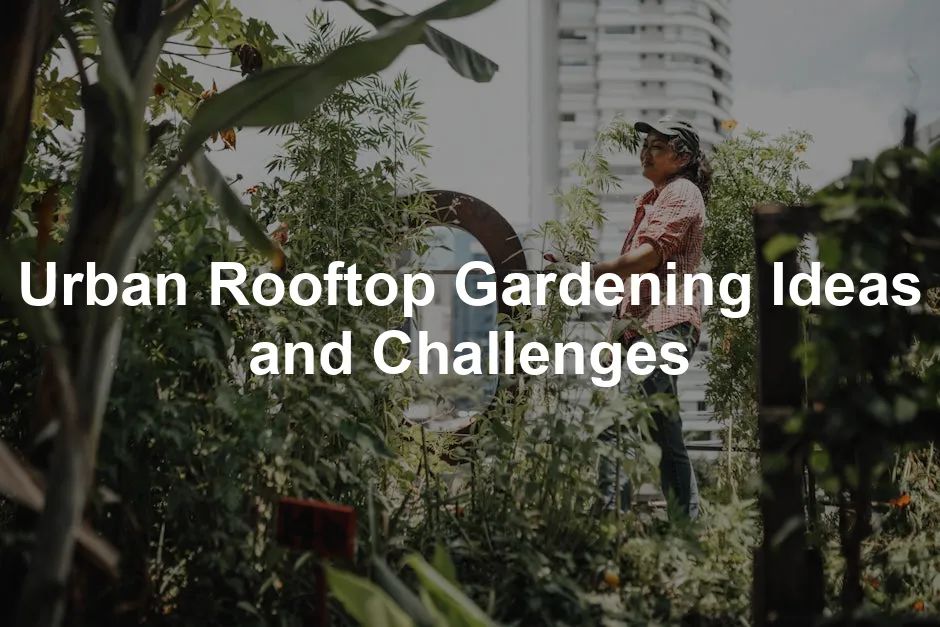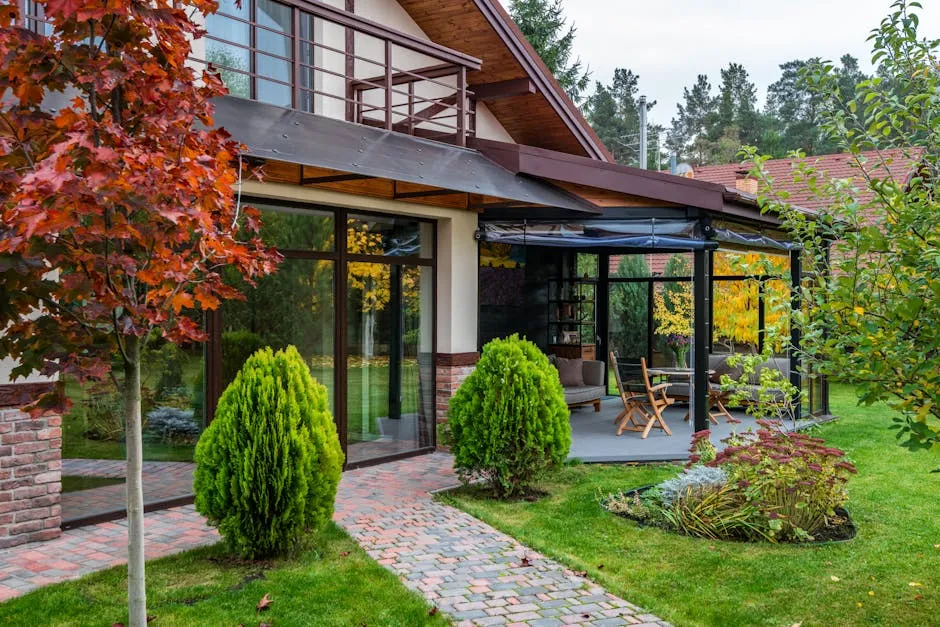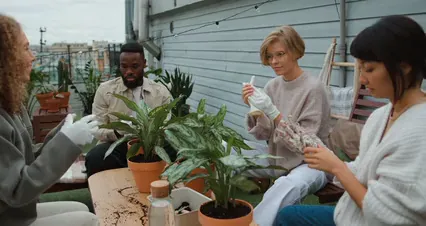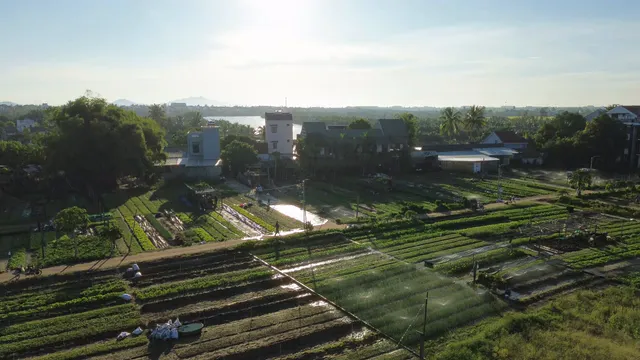

Urban Rooftop Gardening Ideas and Challenges
Introduction
Urban rooftop gardening is not just a trend; it’s a revolution in how we think about urban spaces. As cities continue to grow and green spaces dwindle, rooftops have emerged as the new frontier for sustainable gardening. Imagine transforming a barren concrete space into a lush oasis where vegetables flourish, flowers bloom, and community thrives—all while tackling food security and environmental challenges. Whether you’re a seasoned gardener or a curious city dweller, this guide will explore innovative rooftop gardening ideas alongside the challenges you might encounter. Rooftop gardens offer a unique opportunity to connect with nature amidst the hustle and bustle of city life. They provide fresh produce, reduce urban heat, and improve air quality. Plus, they can be a delightful place to unwind after a long day. So, let’s dig into the world of rooftop gardening and discover how to make the most of our urban landscapes! But hold your trowels! It’s not all sunshine and rainbows up there. Rooftop gardening comes with its own set of challenges. From structural limitations to resource scarcity, potential gardeners need to be prepared for a few bumps on the road to their garden goals. This guide will explore creative solutions to these obstacles, ensuring your urban gardening experience is both fruitful and enjoyable. Get ready to cultivate your green thumb and embrace the joys of rooftop gardening!
The Benefits of Urban Rooftop Gardening
Urban rooftop gardening isn’t just a trendy pastime; it’s a powerhouse of benefits that your city needs. Let’s unpack the perks that come with sprouting green spaces atop concrete.Environmental Benefits
– Biodiversity: Rooftop gardens serve as vital havens for urban wildlife. They attract bees, butterflies, and birds, enhancing local ecosystems. These little visitors not only add charm but also help pollinate plants, boosting biodiversity and creating a more balanced environment. – Air Quality: Plants are nature’s air purifiers. They absorb harmful pollutants and carbon dioxide, releasing clean oxygen into the atmosphere. A rooftop garden can significantly improve air quality, making it easier for city dwellers to breathe. Plus, fewer pollutants mean a happier planet! – Stormwater Management: Cities often struggle with stormwater runoff. Rooftop gardens help absorb rainwater, reducing the burden on drainage systems. They filter excess water, minimizing flooding and water pollution. This natural filtration system is a win-win for both urban infrastructure and the environment. And while you’re at it, make sure you have a reliable Drip Irrigation Kit to keep your plants hydrated without wasting water!
Social Benefits
– Community Engagement: Rooftop gardens can transform neighbors into friends. They foster a sense of community, where residents collaborate on gardening projects, share tips, and even exchange produce. These green spaces create opportunities for social interaction and community bonding, making the city feel a little less lonely. – Mental Health: Green spaces are proven stress relievers. Rooftop gardens provide a serene escape from the hustle and bustle of urban life. Spending time among plants can reduce anxiety and promote relaxation. Imagine sipping coffee in your cozy garden, basking in the sun. Pure bliss!Economic Benefits
– Property Value: A well-maintained rooftop garden can increase property values. Potential buyers are often drawn to homes with green spaces, viewing them as desirable features. A vibrant garden can set your property apart, making it a hot commodity in the real estate market. – Food Security: With the rise in urban populations, rooftop gardens can help address food scarcity. They allow residents to grow their own fruits and vegetables, reducing reliance on grocery stores. By decreasing the distance food travels, rooftop gardens support local economies and promote sustainability. Consider exploring year-round gardening techniques for cold climates to maximize your rooftop garden’s productivity. And don’t forget to nurture your plants with some quality Plant Food Fertilizer to ensure they grow strong and healthy!
In summary, urban rooftop gardening is more than just a charming trend. It offers indispensable environmental, social, and economic benefits. From boosting biodiversity and cleaning the air to enhancing community ties and increasing property values, these gardens are a gift to urban living. If you haven’t considered starting a rooftop garden yet, now’s the time to take action!By implementing effective gardening techniques, you can significantly enhance your rooftop garden’s yield and sustainability. year-round gardening techniques for cold climates
Challenges of Rooftop Gardening
Rooftop gardening is an exciting venture, but it comes with its fair share of challenges. Understanding these hurdles is the first step to creating a flourishing rooftop garden. Let’s take a closer look at the primary obstacles you might face.
Structural Limitations
Weight Load Considerations Before you start planting, check your rooftop’s load capacity. Most rooftops aren’t designed for the weight of a full garden. Soil, plants, and water can add up quickly. A garden might turn into a rooftop disaster if your roof isn’t prepared. Always calculate the potential weight of your new green oasis. Professional Assessment Consulting a structural engineer is smart. They can evaluate your roof’s strength. You want to ensure it can safely support your garden. This step is crucial to avoid costly repairs down the line.Resource Scarcity
Water Access and Management Water access can be trickier than a cat in a dog park. Rooftops often lack sufficient water supply. Setting up a reliable irrigation system is essential. Hydroponic Gardening Systems can be a game changer! They use less water than traditional gardening and maximize your yield. Rainwater harvesting is another fantastic option. It’s eco-friendly and efficient! Sunlight Exposure Not all rooftops bask in sunlight all day. Some may have limited light due to surrounding buildings. This can restrict your plant choices. Opt for plants that thrive in partial shade. Consider using reflective materials to maximize light capture. Your plants will thank you!
Environmental Contaminants
Soil Quality Urban rooftops can harbor pollutants. Heavy metals and other contaminants may lurk in your soil. It’s essential to test your soil before planting. You don’t want to feed your family potentially toxic produce. Use organic soil amendments to improve quality and safety. Check out this Organic Potting Soil for a safe and nutrient-rich growing medium! Best Practices Regular soil testing is key. Amend your soil with safe, nutrient-rich materials. Using raised beds can help prevent direct contact with contaminated soil. Choose certified organic soil and compost to ensure healthy growth.Economic Barriers
Initial Costs Starting a rooftop garden may feel like a financial leap. You’ll need to budget for soil, plants, containers, and irrigation systems. The costs can add up quickly, especially if you’re aiming for a larger garden. However, remember that investing in your garden can pay off in fresh produce. If you’re looking for a budget-friendly way to start, consider using recycled materials. You might want to grab a Gardening Gloves to keep your hands clean while you dig in! Long-term Viability Assessing the long-term benefits is vital. While initial costs might be high, consider the savings on grocery bills. Fresh herbs and vegetables from your rooftop can reduce your reliance on store-bought produce. Plus, the environmental benefits can lead to a healthier community overall.
Tokyo: Urban Farming Regulations
Policy Framework Tokyo has embraced urban farming with open arms. The government promotes rooftop gardens through various initiatives. Policies encourage green spaces to combat urban heat and enhance food security. For instance, the Tokyo Metropolitan Government implemented the “Rooftop Greenery Promotion Program.” This program supports building owners in creating and maintaining rooftop gardens. The goal? To transform concrete jungles into vibrant green spaces. These regulations not only beautify the skyline but also improve air quality and biodiversity. Community Involvement Local success stories abound in Tokyo. Communities thrive through collaborative gardening projects. Residents join forces to plant, maintain, and harvest. One notable example is the “Rooftop Garden Project in Shinjuku.” This initiative brings together diverse groups—students, seniors, and families—to grow vegetables and herbs. Participants enjoy fresh produce while fostering a sense of community. These gardens also serve as educational platforms, teaching sustainable practices. Tokyo’s community-driven approach showcases the power of collaboration in urban agriculture.
Future of Rooftop Gardening
Trends The popularity of urban agriculture is skyrocketing. More people are discovering the joys of rooftop gardening. This trend is driven by a desire for fresh produce and sustainable living. As awareness grows, cities worldwide are adopting similar practices. Urban rooftops are no longer neglected spaces; they are becoming vital food sources. This shift indicates a promising future for urban agriculture.

Conclusion
Urban rooftop gardening offers an incredible opportunity to transform our cities into more sustainable and livable environments. While challenges exist, the benefits—ranging from improved air quality to enhanced community connections—far outweigh the obstacles. By leveraging innovative gardening techniques and being mindful of potential challenges, city dwellers can cultivate their green spaces and contribute to a healthier urban ecosystem. Whether you’re looking to grow your own food, create a peaceful retreat, or simply beautify your surroundings, rooftop gardening is a path worth exploring. The future of our cities depends on our ability to integrate nature into our urban landscapes, and rooftop gardens are a vital step in that direction. As urban populations continue to swell, these green spaces will become essential. They not only provide food and beauty but also foster community ties and mental well-being. So, grab your Gardening Apron and start planning your rooftop haven. Together, we can create greener cities for future generations. Let’s cultivate a legacy of sustainability and connection, one rooftop at a time!FAQs
What types of plants are best for rooftop gardens?
Hardy plants thrive best in rooftop gardens. Succulents, Mediterranean herbs, and drought-resistant vegetables are ideal. They handle heat and dry conditions like champs. Think about tomatoes, peppers, and even some leafy greens! Their resilience makes them perfect for urban skies.
How do I ensure my rooftop can support a garden?
Before planting, get a professional opinion. Consult a structural engineer to evaluate the weight capacity of your roof. They’ll assess whether it can handle soil, plants, and water. This step is crucial to avoid any unexpected rooftop sagging!
What are some low-cost options for starting a rooftop garden?
Starting small is the way to go! Use recycled containers like old buckets or crates. You can also team up with neighbors for a community garden. Sharing the costs makes it budget-friendly. Remember, every little plant counts!
How can I manage water efficiently in a rooftop garden?
Water management is vital for rooftop success. Implement drip irrigation systems to save water while keeping plants hydrated. Don’t forget about rainwater harvesting! Collecting rainwater is eco-friendly and helps reduce your water bill. Choose drought-resistant plants to minimize watering needs, too.
Are there any health risks associated with rooftop gardening?
Yes, there can be risks. Urban soils might contain contaminants like heavy metals. It’s wise to test your soil before planting. Using safe, organic materials and raised beds can help mitigate risks. Keeping your plants safe ensures you enjoy fresh, healthy produce!
Please let us know what you think about our content by leaving a comment down below!
Thank you for reading till here 🙂
All images from Pexels



